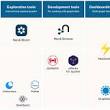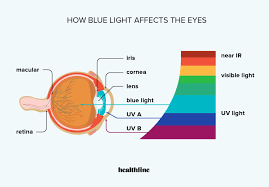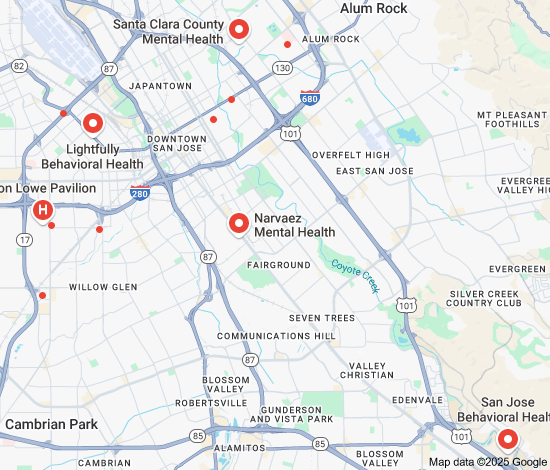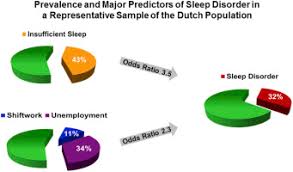Exploring the Power of Graph Visualization
Graph visualization is a powerful tool that allows us to represent and analyze complex relationships and connections between various entities. Whether it’s social networks, biological systems, or data structures, graph visualization provides a visual representation that helps us make sense of intricate data.
One of the key advantages of graph visualization is its ability to uncover patterns and insights that may not be apparent in traditional data formats. By visually mapping out nodes (entities) and edges (relationships), we can identify clusters, outliers, and trends within the data.
Furthermore, graph visualization enables interactive exploration, allowing users to navigate through the data dynamically. This interactivity enhances the understanding of the relationships within the graph and facilitates deeper analysis.
Graph visualization tools come in various forms, from simple network diagrams to sophisticated 3D visualizations. These tools often provide customization options for layout, color-coding, and filtering to tailor the visualization to specific needs.
Businesses leverage graph visualization for diverse applications such as fraud detection, recommendation systems, supply chain optimization, and social network analysis. Researchers use it to study complex systems like protein interactions or transportation networks.
In conclusion, graph visualization is a versatile technique that offers valuable insights into interconnected data. Its visual nature makes it accessible to both experts and non-experts alike, making it a valuable asset in understanding complex relationships in various domains.
9 Essential Tips for Effective Graph Visualization
- Choose the right type of graph for your data
- Keep the design clean and simple
- Use colors strategically to highlight key information
- Provide clear labels for axes and data points
- Ensure consistency in style throughout the visualization
- Avoid clutter by removing unnecessary elements
- Use appropriate scales to accurately represent data
- Consider interactivity for exploring detailed information
- Seek feedback from others to improve the effectiveness of your visualizations
Choose the right type of graph for your data
Choosing the appropriate type of graph for your data is crucial in effectively conveying information and insights. Different types of graphs, such as bar graphs, line graphs, pie charts, and network graphs, serve specific purposes and excel in representing different types of data. By selecting the right graph type that aligns with the nature of your data, you can enhance clarity, highlight trends, and facilitate a better understanding of the relationships within your dataset. This thoughtful consideration ensures that your visual representation accurately reflects the story behind the data, enabling viewers to interpret and analyze it more efficiently.
Keep the design clean and simple
When working with graph visualization, it is essential to adhere to the tip of keeping the design clean and simple. By maintaining a minimalist approach to the visual representation of nodes and edges, the graph becomes easier to interpret and understand. A clutter-free design allows viewers to focus on the relationships and patterns within the data without being overwhelmed by unnecessary visual elements. Embracing simplicity in graph visualization enhances clarity and facilitates more effective analysis of complex information.
Use colors strategically to highlight key information
When utilizing graph visualization, it is essential to employ colors strategically to emphasize crucial information effectively. By assigning specific colors to nodes or edges that represent significant data points or relationships, users can quickly identify and focus on key elements within the graph. Careful selection of color schemes can enhance the visual hierarchy, making it easier to interpret complex graphs and extract valuable insights at a glance.
Provide clear labels for axes and data points
Providing clear labels for axes and data points is essential in graph visualization as it enhances the readability and understanding of the information presented. Clear labels help users quickly grasp the context of the data being displayed, making it easier to interpret trends, patterns, and relationships within the graph. Additionally, well-labeled axes ensure that viewers can accurately identify the variables being represented, enabling them to draw meaningful conclusions from the visualization. By implementing clear labeling practices, graph visualizations become more accessible and effective tools for conveying complex data in a comprehensible manner.
Ensure consistency in style throughout the visualization
Ensuring consistency in style throughout a graph visualization is crucial for enhancing clarity and readability. By maintaining uniformity in color schemes, node shapes, edge styles, and text formatting, viewers can easily interpret the information presented. Consistent styling helps establish visual patterns that guide the audience’s attention and convey relationships effectively. It also fosters a cohesive and professional look, making the visualization more engaging and easier to comprehend at a glance.
Avoid clutter by removing unnecessary elements
To enhance the clarity and effectiveness of graph visualization, it is crucial to avoid clutter by removing unnecessary elements. By decluttering the graph, such as eliminating redundant nodes or edges, simplifying labels, and reducing visual noise, viewers can focus on the essential relationships and patterns within the data. This streamlined approach not only improves the overall aesthetics of the visualization but also makes it easier for users to interpret and extract meaningful insights from the graph.
Use appropriate scales to accurately represent data
When working with graph visualization, it is crucial to use appropriate scales to accurately represent data. Choosing the right scale ensures that the relationships and patterns within the data are displayed clearly and effectively. By scaling the axes properly, you can avoid distorting the data and present a true reflection of the underlying information. This practice not only enhances the interpretability of the graph but also helps in making informed decisions based on accurate insights derived from the visualization.
Consider interactivity for exploring detailed information
When delving into the realm of graph visualization, it is crucial to consider the incorporation of interactivity to facilitate the exploration of detailed information. By enabling users to interact with the graph, such as zooming in on specific nodes or filtering out irrelevant data, a richer understanding of the relationships and nuances within the graph can be achieved. Interactivity not only enhances the user experience but also empowers individuals to uncover deeper insights and make more informed decisions based on the intricacies of the data at hand.
Seek feedback from others to improve the effectiveness of your visualizations
Seeking feedback from others is a crucial step in enhancing the effectiveness of your graph visualizations. By soliciting input from colleagues, stakeholders, or even end users, you can gain valuable perspectives on how well the visualization communicates the intended message. Constructive feedback can help identify areas for improvement, such as clarity of labels, color choices, layout design, or overall coherence. Incorporating feedback allows you to refine your visualizations to better resonate with your audience and convey information more effectively.




